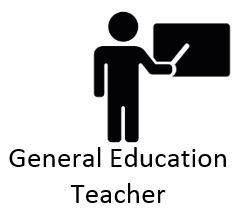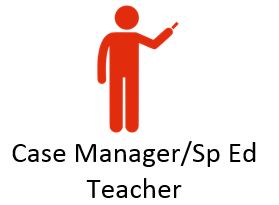Promoting independence for students with disabilities does involve a number of specific strategies, but it starts with having the right mindset. As it has been said before, culture eats strategies everyday. If school staff wish to empower their special learners in being more independent, each team member first must be bought in. For some that may take shift from old thinking to new thinking about how a 1:1 paraeducator is used in the general education classroom.
Old Mindset: The paraeducator is here to manage the student. The student’s success will be measured by what they are able to do with their paraeducator’s help.
New Mindset: The paraeducator is here to support the student in accessing my instruction. The student’s success will be measured by what they are able to accomplish with minimal help.
Old Mindset: My role is to do things for the teacher and make sure my student does not disrupt learning. I am the student’s primary instructor.
New Mindset: My role is to connect the student with the rest of the classroom and with their primary instructor, the teacher.
Old Mindset: The paraeducator is mine. I go to them for help or to strike up a conversation. They are my friend. They must follow me wherever I go.
New Mindset: The paraeducator is a helper in the classroom. I go to my peers for conversation and to my teacher for help, though the paraeducator might assist the teacher in helping me.
Old Mindset: The paraeducator will lead me in teaching the student. They will tell me if I need to do something specific for the student.
New Mindset: I will lead in teaching the student, and the paraeducator will help me with the follow through.
 Old Mindset: I shouldn’t bug the paraeducator or their student. They want to be left alone.
Old Mindset: I shouldn’t bug the paraeducator or their student. They want to be left alone.
New Mindset: I can ask the paraeducator for help if they are free and I can talk to their student if it is appropriate.
Old Mindset: Since the student has a paraeducator I do not need to worry about their program because someone else is overseeing it.
New Mindset: I should have ongoing collaboration with other building staff, including the paraeducator and therapists when applicable, on how we can help this student be more independent. The result of this collaboration needs to be shared with all educators who support this student.
 Old Mindset: The paraeducator is in charge of making sure my student gets their work done. I am concerned if I feel the paraeducator is not doing enough.
Old Mindset: The paraeducator is in charge of making sure my student gets their work done. I am concerned if I feel the paraeducator is not doing enough.
New Mindset: The paraeducator helps my student have access to the general education curriculum and progress in their IEP goals with minimal help. I am concerned if I feel they are doing too much.
Old Mindset: School staff can focus on promoting independence for students with 1:1 paraeducators, regardless of how difficult their caseload/situation is.
New Mindset: School staff can focus on promoting independence to the degree that they have capacity and have support from administration.
Getting everyone on the same page from the get go is essential if teams wish to effectively work together in promoting independence for students. You can see me speak on this topic as it relates to students with autism in Seattle in March at the Rehab Seminars Conference. You can find more info here. Until then, happy teaming!











